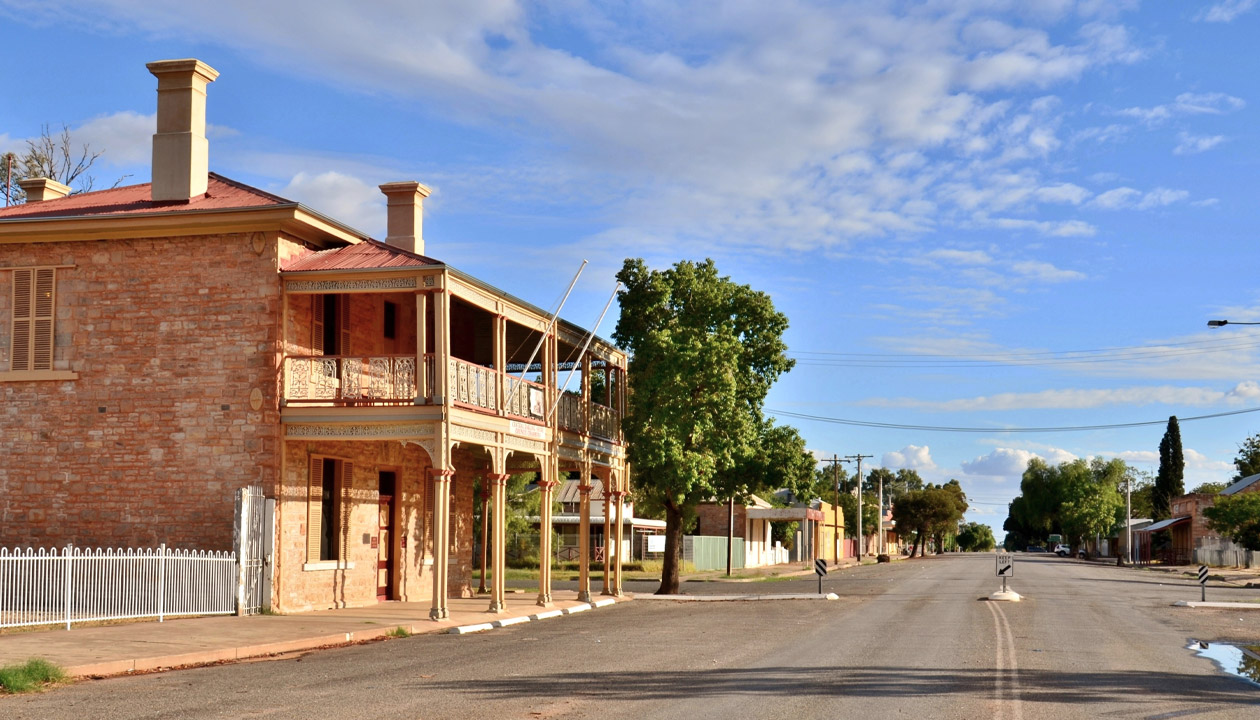This far west New South Wales town is turning its fortunes around, thanks to volunteers and a new appreciation for its Indigenous heritage.
Story John Dunn Photos Chris Elliott
It’s difficult to imagine it now, but Wilcannia was once Australia’s third biggest inland port. During the great riverboat era of the mid to late 19th century, when the Darling was a fine, free-flowing watercourse, it handled hundreds of steamers and was a vital transport hub in inland Australia for ferrying wool to the rest of the world.
Since those heady days, wealth has largely eluded the denizens of the town and administrators took over the Central Darling Shire in 2014 due to financial difficulties. “We are the biggest shire in New South Wales – 50,000sq km – but we only have 2000 people,” general manager Greg Hill says. “We have the infrastructure of four towns – Wilcannia, Menindee, White Cliffs and Ivanhoe – to service, and 3000km of roads to maintain. There are always budgetary problems, but now we feel we’re getting there.”
The 700 residents of Wilcannia are now looking forward to enhanced prospects from tourism. Following a grant of $7 million provided by federal and state governments, architects are drawing up plans for an art complex that will celebrate the region’s Aboriginal heritage.
“It will be called the Baaka Centre and will showcase local Indigenous culture and tradition, develop the Wilcannia community’s strong sense of identity, and boost the local economy through Indigenous employment,” says Mark Coulton, the federal member for Parkes.
Students from the Royal Melbourne Institute of Technology visited recently and worked on designs for the centre, which will replace the derelict Knox and Downs general store, which was destroyed by fire 17 years ago. They were urged by local elder, artist and educator, Uncle William “Badger” Bates, to highlight the river. “The Darling is everything to us,” he says. “It is our life, our culture.” He told the students to “try to capture the spirit of the country, its trees and rocks but especially the river”.
The Baaka Centre will provide new life to the main street, attract passing tourist traffic and be an interesting contemporary contrast, as well as a pointer to the town’s superb colonial structures that too often are unseen by hurrying travellers. Built of local sandstone, these grand old buildings remain today as testimony to the status Wilcannia once enjoyed. They function still – the post office, police station and courthouse – all built in 1880. As well, there’s the Athenaeum Museum built in 1883 and the London Standard Chartered Bank in 1887.
A new $30 million town weir is planned to provide town water during dry periods. “The people who live here have grown to be resilient,” Greg says. “They have seen the water in the Darling almost vanish. They have adjusted to the council being replaced because they realise rate revenue has always been a problem. A small town like this needs a lot of help to function properly because it doesn’t have too many resources, but Wilcannia is fortunate in that it is home to a group of enthusiastic and dedicated people who combine to produce a vital and necessary community spirit.”
This story excerpt is from Issue #127
Outback Magazine: Oct/Nov 2019










